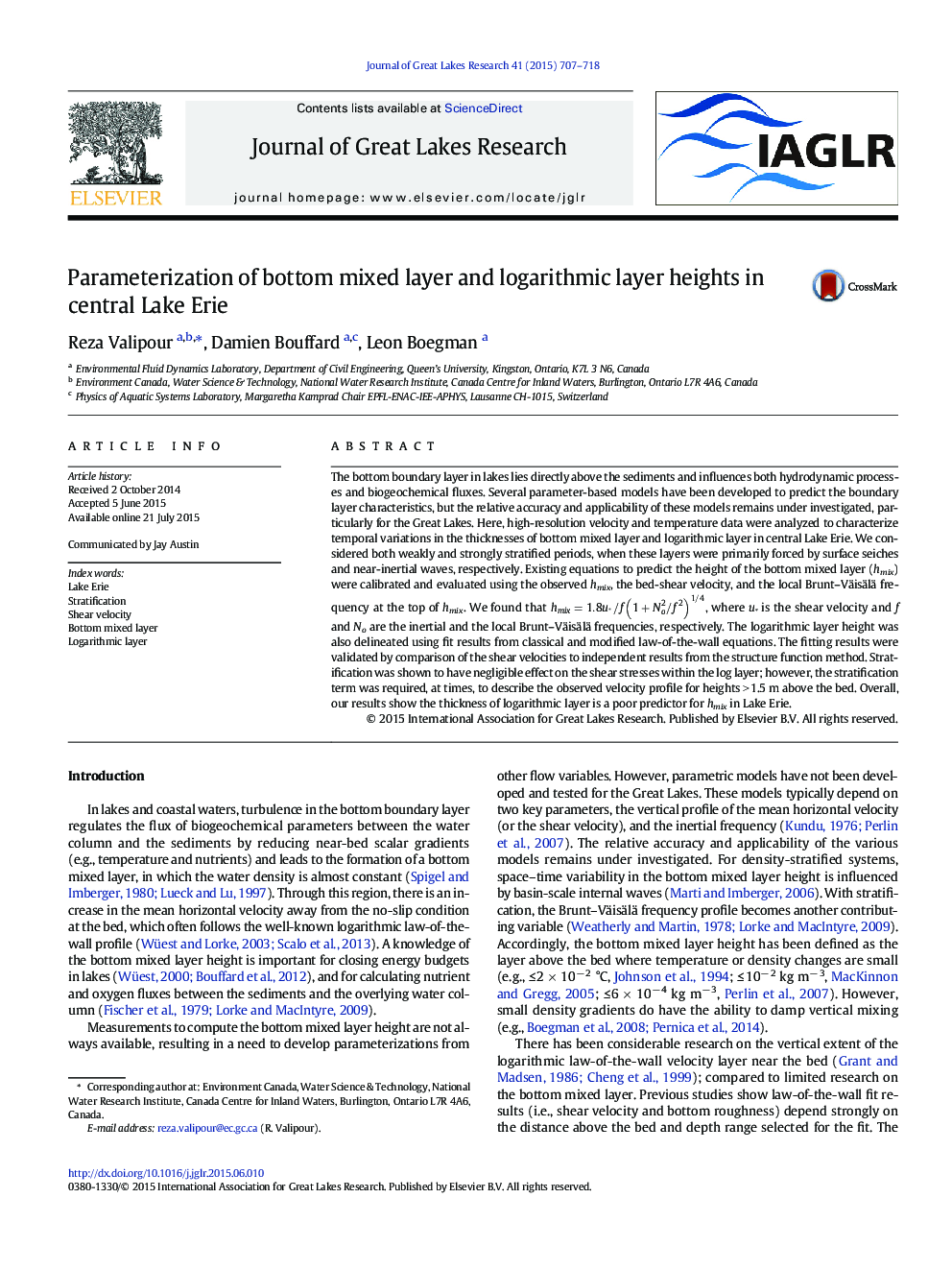| Article ID | Journal | Published Year | Pages | File Type |
|---|---|---|---|---|
| 6304943 | Journal of Great Lakes Research | 2015 | 12 Pages |
Abstract
The bottom boundary layer in lakes lies directly above the sediments and influences both hydrodynamic processes and biogeochemical fluxes. Several parameter-based models have been developed to predict the boundary layer characteristics, but the relative accuracy and applicability of these models remains under investigated, particularly for the Great Lakes. Here, high-resolution velocity and temperature data were analyzed to characterize temporal variations in the thicknesses of bottom mixed layer and logarithmic layer in central Lake Erie. We considered both weakly and strongly stratified periods, when these layers were primarily forced by surface seiches and near-inertial waves, respectively. Existing equations to predict the height of the bottom mixed layer (hmix) were calibrated and evaluated using the observed hmix, the bed-shear velocity, and the local Brunt-Väisälä frequency at the top of hmix. We found that hmix=1.8u*/f1+No2/f21/4, where uâ is the shear velocity and f and No are the inertial and the local Brunt-Väisälä frequencies, respectively. The logarithmic layer height was also delineated using fit results from classical and modified law-of-the-wall equations. The fitting results were validated by comparison of the shear velocities to independent results from the structure function method. Stratification was shown to have negligible effect on the shear stresses within the log layer; however, the stratification term was required, at times, to describe the observed velocity profile for heights >Â 1.5Â m above the bed. Overall, our results show the thickness of logarithmic layer is a poor predictor for hmix in Lake Erie.
Related Topics
Physical Sciences and Engineering
Earth and Planetary Sciences
Earth and Planetary Sciences (General)
Authors
Reza Valipour, Damien Bouffard, Leon Boegman,
